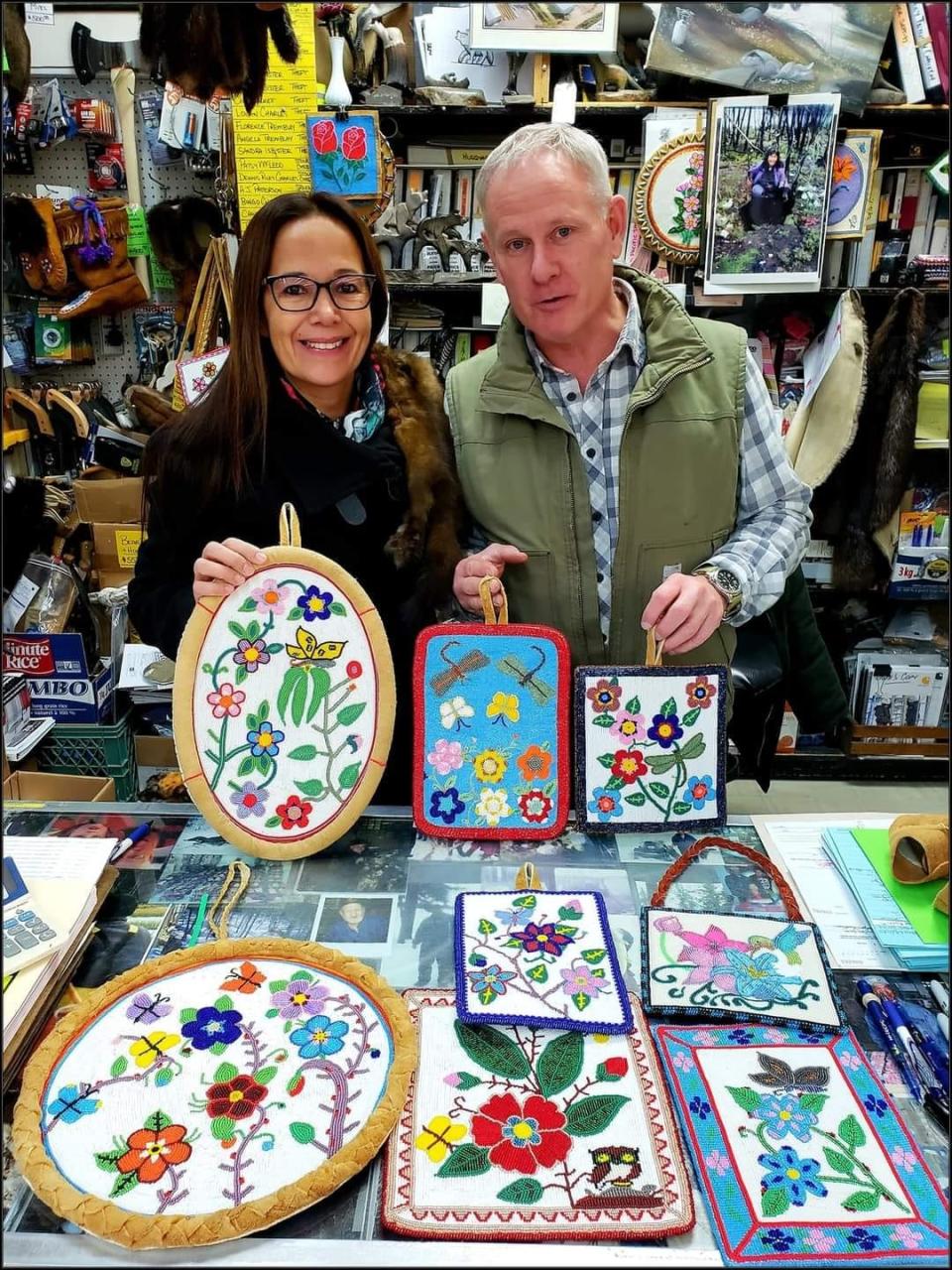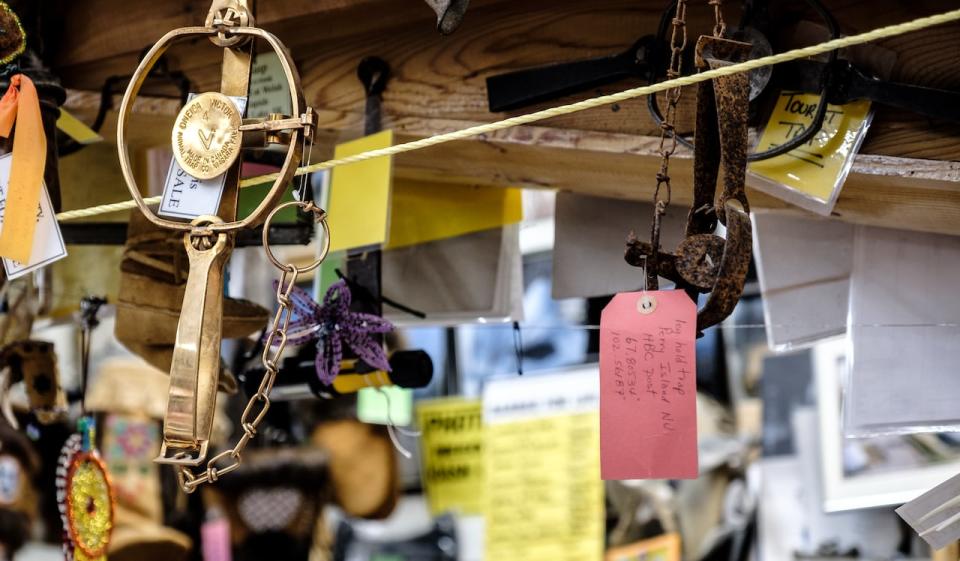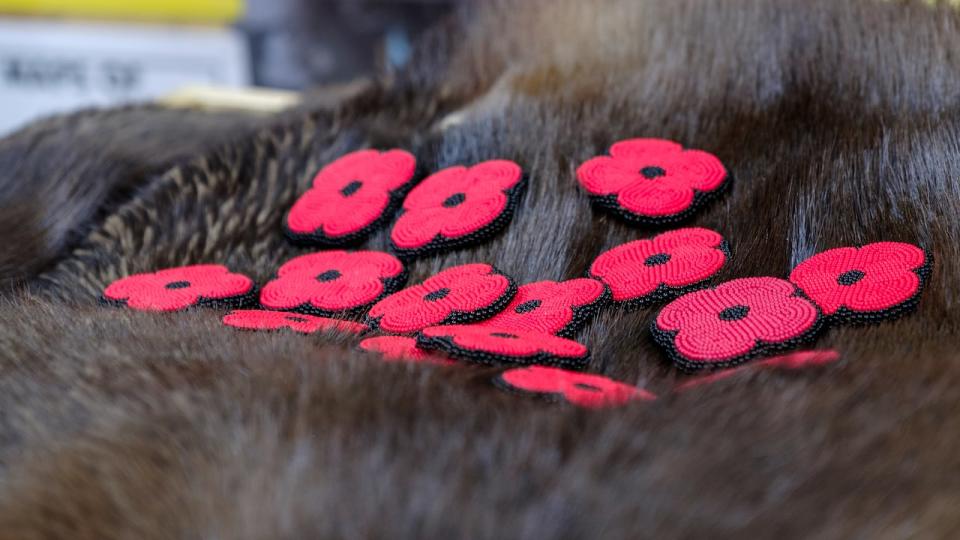People reflect on legacy of Robertson Trading as store winds down after 56 years

Dozens of people are paying tribute to an iconic store and fur trading post in northern Saskatchewan — and the people who ran it — as the shop enters its final weeks after 56 years in the community.
Robertson Trading is a well-equipped general store, but it's also an Indigenous art gallery, a display of genuine Canadian antiques, a bucket-list destination for tourists and an outfitter for people heading out onto the land.
Owner Scott Robertson has worked at the store in La Ronge, Sask., since he was nine-years old. Robertson has been tormented by the thought of shutting down the shop, but it's time for him to retire.
"It's hard. It keeps me up at night, I feel like a traitor," Robertson said. But he's turning 66 in a few weeks and his family is growing with grandchildren.
"At some point, every man has to draw a line in the sand and make this decision."
LISTEN: People pay tribute to the history and legacy of Robertson Trading:
The Trading Post is a family business.
Scott took the store over from his late dad Alex Robertson, a professionally trained and talented fur grader. Alex and his wife Phyllis first opened up the store in 1967, not knowing then that it would become known as a gem of the north appreciated by generations of people.
There was no one in the family who wanted to pick up the torch and carry the business forward, so Scott is shutting it down at the end of December.
"Robertsons has been a huge part of our community and it's really sad to see them closing — but I also understand where they're coming from," said Tammy Cook-Searson, who is chief of the Lac La Ronge Indian Band. She worked at the store on the weekends when she was younger and her parents sold their furs there.

Tammy Cook-Searson and Scott Robertson stand behind the trading desk behind a grouping of intricate beadwork. (Tammy Cook-Searson/Facebook)
When Cook-Searson told her mom about the store closing down, her mom walked through a mental list of all the items they would get from Robertson Trading in the fall before heading out to the trapline for the season.
There was bags of sugar, buckets of lard, canned soup, macaroni, salt pork, gun shells, soap, tobacco, tea, threads, beads, boots, winter clothing and even candy. The family would return around Christmas to sell their furs and restock.
"They provided such amazing service and even gave credit to people until they came back from the trap line with their furs to pay the bill and get more supplies," Cook-Searson said.
Even though the fur trade has dwindled, the store offers people a glimpse of what it was like by displaying photos, animals, furs, traps and tools.
Cook-Searson said the store was key in supporting those who worked on the land with high-quality goods, and it was equally important that it supported local Indigenous artists — selling and displaying their intricate carvings, beading, paintings and leather work in the store.

Old traps hang from the ceiling at Robertson Trading. (Kendall Latimer/CBC)
The collection is carefully curated. It began with Alex Robertson's deep appreciation of Indigenous artwork and that respect carried on in Scott.
They have featured only the best of northern Saskatchewan. Many of the items are not sale — only on display to be admired.

There are layers upon layers of intricate Indigenous artwork and creations inside Robertson Trading. (Kendall Latimer/CBC)
A legacy of northern people
For decades, the store has been a meeting ground where people come together.
Joan Beatty, who worked above Robertson Trading Post when she was a CBC journalist, said the Trading Post was always a welcoming place where all people were treated with kindness by the Robertsons and other staff members.
She still remembers going downstairs and feeling awestruck by the artwork and artifacts that lined the walls. These items in the store reflect the history of the north in a way that no other place does, she said.
"It's built a legacy of who we are as northern people," Beatty said. "We almost are losing the soul of, you know, the history of who we are."
She's hopeful something will be established in the community so the collection can remain on display and live on.

The Robertsons worked hard to form relationships with local carvers, painters and beaders in northern Sask. (Kendall Latimer/CBC)
Owner Scott Robertson hopes the same.
"I don't think there's a business in Western Canada that has tried harder to pay tribute to local Aboriginal people than we have," he said.
"The Robertson Collection should stay in La Ronge."


